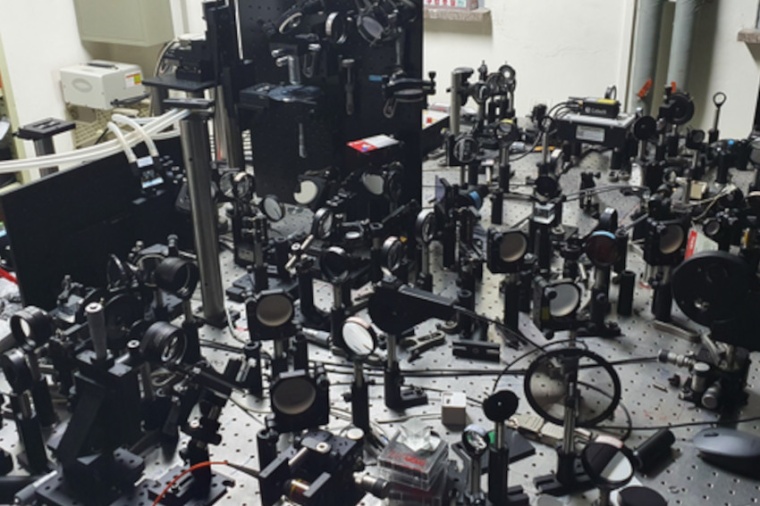A new holographic microscope images the brain
New kind of label-free deep-tissue imaging retrieves the fine neural network of a mouse brain.
Researchers led by Choi Wonshik of the Center for Molecular Spectroscopy and Dynamics within the Institute for Basic Science, Kim Moonseok of The Catholic University of Korea, and Choi Myunghwan of Seoul National University developed a new type of holographic microscope. It is said that the new microscope can achieve “see through” the intact skull, and is capable of high-resolution 3D imaging of the neural network within a living mouse brain without removing the skull.

In order to scrutinize the internal features of a living organism using light, it is necessary to deliver sufficient light energy to the sample and accurately measure the signal reflected from the target tissue. However, in living tissues multiple scattering effects and severe aberration tend to occur when light hits the cells, which makes it difficult to obtain sharp images. In complex structures such as living tissue, light undergoes multiple scattering, which causes the photons to randomly change their direction several times as they travel through the tissue. Because of this process, much of the image information carried by the light becomes ruined. However, even if it is a very small amount of reflected light, it is possible to observe the features located relatively deep within the tissues by correcting the wavefront distortion of the light that was reflected from the target to be observed.
However, the above-mentioned multiple scattering effects interfere with this correction process. Therefore, in order to obtain a high-resolution deep-tissue image, it is important to remove the multiple-scattered waves and increase the ratio of the single-scattered waves. In 2019, IBS researchers developed the high-speed time-resolved holographic microscope that can eliminate multiple scattering and simultaneously measure the amplitude and phase of light. They used this microscope to observe the neural network of live fish without incisional surgery. However, in the case of a mouse which has a thicker skull than that of a fish, it was not possible to obtain a neural network image of the brain without removing or thinning the skull, due to severe light distortion and multiple scattering occurring when the light travels through the bone structure.
The research team managed to quantitatively analyze the interaction between light and matter, which allowed them to further improve their previous microscope. Now, they reported the successful development of a super-depth, three-dimensional time-resolved holographic microscope that allows for the observation of tissues to a greater depth than ever before. Specifically, the researchers devised a method to preferentially select single-scattered waves by taking advantage of the fact that they have similar reflection waveforms even when light is input from various angles.
This is done by a complex algorithm and a numerical operation that analyzes the eigenmode of a medium, which allows the finding of a resonance mode that maximizes constructive interference between wavefronts of light. This enabled the new microscope to focus more than 80 times of light energy on the neural fibers than before, while selectively removing unnecessary signals. This allowed the ratio of single-scattered waves versus multiple-scattered waves to be increased by several orders of magnitude.
The research team went on the demonstration of this new technology by observing the mouse brain. The microscope was able to correct the wavefront distortion even at a depth that was previously impossible using existing technology. The new microscope succeeded in obtaining a high-resolution image of the mouse brain's neural network under the skull. This was all achieved in the visible wavelength without removing the mouse skull and without requiring a fluorescent label.
Kim Moonseok and Jo Yonghyeon, who have developed the foundation of the holographic microscope, said, “When we first observed the optical resonance of complex media, our work received great attention from academia. From basic principles to practical application of observing the neural network beneath the mouse skull, we have opened a new way for brain neuroimaging convergent technology by combining the efforts of talented people in physics, life, and brain science.” Choi Wonshik said, “For a long time, our Center has developed super-depth bioimaging technology that applies physical principles. It is expected that our present finding will greatly contribute to the development of biomedical interdisciplinary research including neuroscience and the industry of precision metrology.” (Source: IBS)











